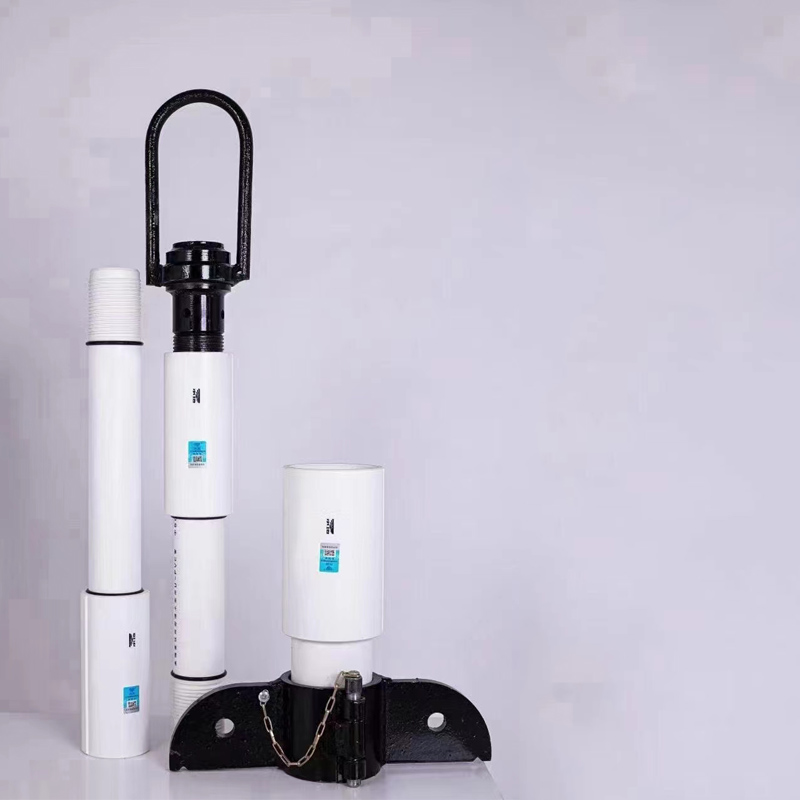Sep . 30, 2024 00:17 Back to list
Connecting PVC to HDPE Pipes for Efficient Water Flow Solutions
Connecting PVC to HDPE Pipe A Comprehensive Guide
In the realm of plumbing and piping systems, the need for compatibility between different types of materials is ever-present. PVC (Polyvinyl Chloride) and HDPE (High-Density Polyethylene) are two of the most commonly used materials, each offering unique benefits and applications. However, connecting these two types of pipes can be a challenge due to their differing properties. Understanding the best methods, tools, and fittings for this connection is crucial for any plumbing project.
Understanding PVC and HDPE
PVC is a versatile plastic commonly used in plumbing, drainage, and other applications due to its excellent chemical resistance and affordability. It is lightweight, easy to work with, and can be manufactured in various thicknesses and diameters. However, its limitations include lower flexibility and brittleness compared to HDPE.
HDPE, on the other hand, is known for its toughness, flexibility, and resistance to impact and chemicals. It is often used in applications like water supply, sewage systems, and industrial piping. The flexibility of HDPE makes it ideal for situations that require bending and movement, reducing the risk of breakage under stress.
The Challenges of Connecting PVC to HDPE
The primary challenges in connecting PVC to HDPE include different thermal expansion rates, varying jointing requirements, and compatibility issues. Because PVC is rigid and HDPE is more flexible, improper connections can lead to leaks, pressure loss, and ultimately system failure. Therefore, it's critical to choose the right connection method and fittings that can accommodate the unique characteristics of both materials.
Methods of Connection
1. Mechanical Fittings One of the most common methods for connecting PVC to HDPE is using mechanical fittings. These fittings rely on screws, clamps, or other forms of fastening to create a secure joint. They accommodate the different expansion rates of the two materials and are relatively easy to install. Common types of mechanical fittings include compression fittings, which can create a tight seal without the need for welding or bonding.
2. Transition Fittings Transition fittings specifically designed for PVC to HDPE connections are available on the market. These fittings typically feature one end that connects to PVC via solvent welding and another that connects to HDPE using a compression or flange method. This type of fitting simplifies the connection and ensures a reliable bond.
pvc to hdpe pipe connection products

3. Adhesives and Sealants In some cases, specially designed adhesives can be used to bond PVC and HDPE. However, it's important to note that the effectiveness of sealants may vary and generally is not recommended for high-pressure applications. Always check with the manufacturer to ensure that the adhesive is compatible with both materials.
4. Heat Fusion Although less common for this specific combination, heat fusion techniques can be used in some applications where HDPE is involved. This method involves heating both surfaces and pressing them together to create a strong bond. However, this is generally not applicable for PVC.
Best Practices for Installation
When connecting PVC to HDPE, following best practices can improve the longevity and reliability of the connection
- Prepare the Surfaces Clean the ends of both pipes thoroughly before making a connection. Dirt, debris, and moisture can affect the integrity of the joint.
- Follow Manufacturer Instructions Always refer to the guidelines provided by the fitting manufacturers for the best results. Each product may have specific requirements for installation.
- Perform Regular Inspections After installation, regularly check for leaks or signs of wear. Addressing minor issues promptly can prevent more significant problems down the road.
- Consider Local Regulations Always adhere to local plumbing codes and regulations regarding the use of PVC and HDPE in your area. Compliance ensures safety and reliability.
Conclusion
Connecting PVC to HDPE pipes is a common requirement in many plumbing applications. While there are challenges to consider, various methods such as mechanical fittings, transition fittings, and adhesives can facilitate a secure connection. By understanding the properties of both materials and following best practices for installation, you can ensure that your piping system functions efficiently and effectively. Always remember to consider the specific needs of your project and consult with professionals when in doubt.
-
High-Quality PVC Borehole Pipes Durable & Versatile Pipe Solutions
NewsJul.08,2025
-
High-Quality PVC Perforated Pipes for Efficient Drainage Leading Manufacturers & Factories
NewsJul.08,2025
-
High-Quality PVC Borehole Pipes Durable Pipe Solutions by Leading Manufacturer
NewsJul.08,2025
-
High-Quality PVC Borehole Pipes Reliable PVC Pipe Manufacturer Solutions
NewsJul.07,2025
-
High-Quality UPVC Drain Pipes Durable HDPE & Drain Pipe Solutions
NewsJul.07,2025
-
High-Quality Conduit Pipes & HDPE Conduit Fittings Manufacturer Reliable Factory Supply
NewsJul.06,2025

